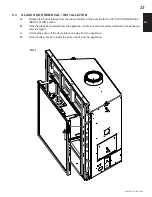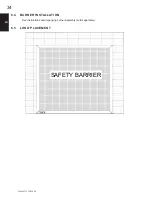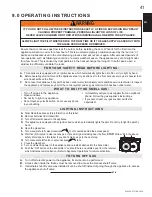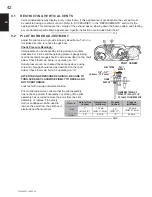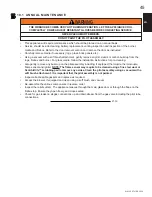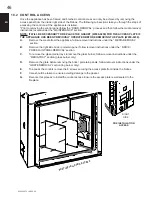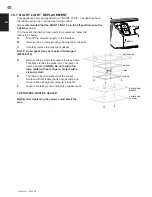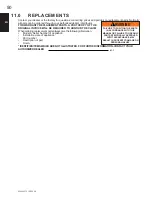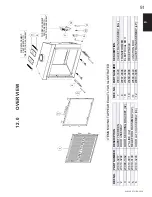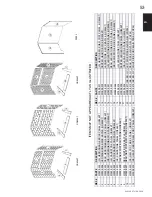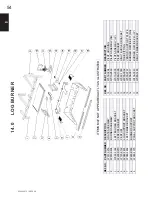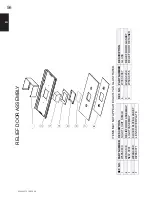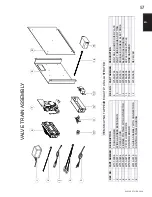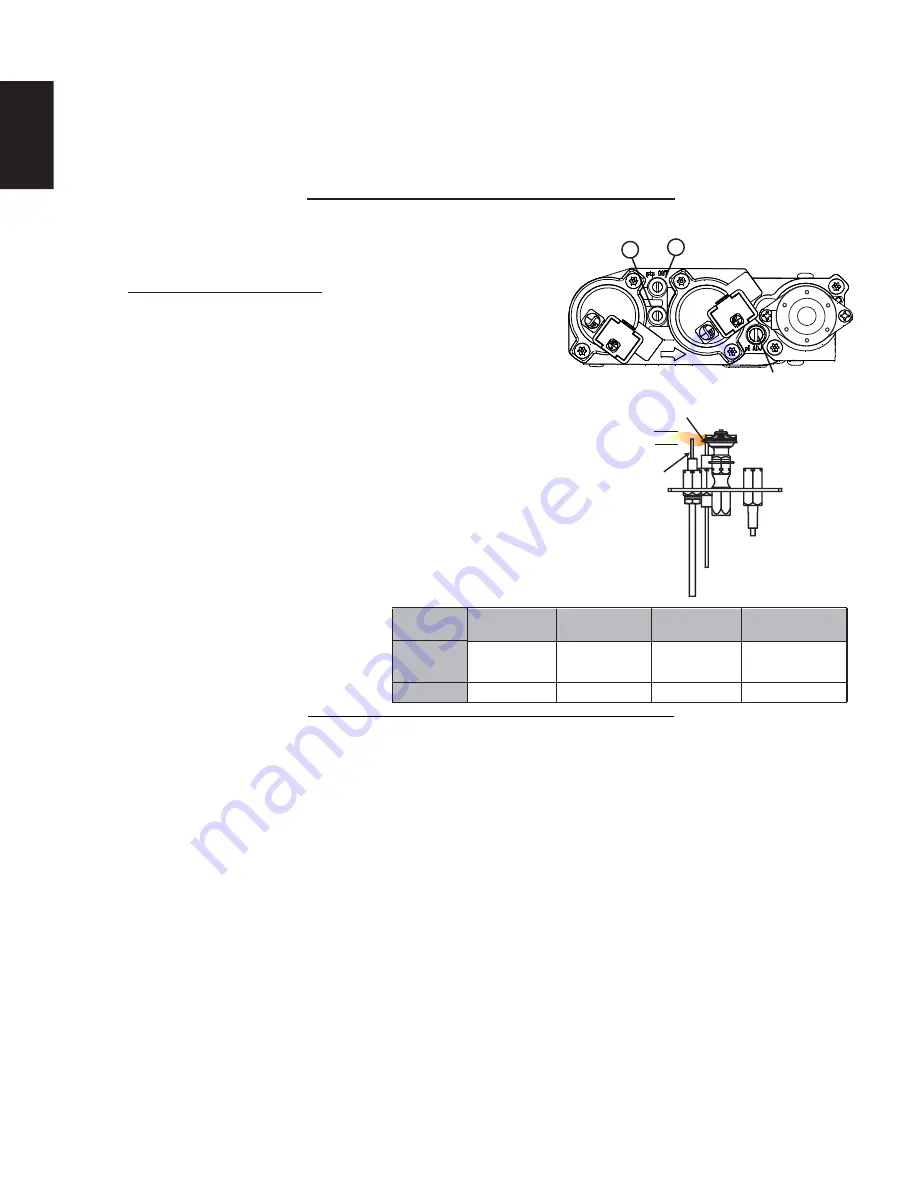
42
W415-1371 / 09.15.14
EN
9.1 RESTRICTING VERTICAL VENTS
Adjust the pilot screw to provide properly sized
fl
ame. Turn in a
clockwise direction to reduce the gas
fl
ow.
Check Pressure Readings:
Inlet pressure can be checked by turning screw (A) counter-
clockwise 2 or 3 turns and then placing pressure gauge tubing
over the test point. Gauge should read as described on the chart
below. Check that main burner is operating on “HI”.
Outlet pressure can be checked the same as above using
screw (B). Gauge should read as described on the chart
below. Check that main burner is operating on “HI”.
AFTER TAKING PRESSURE READINGS, BE SURE TO
TURN SCREWS CLOCKWISE FIRMLY TO RESEAL. DO
NOT OVERTORQUE.
Leak test with a soap and water solution.
Prior to pilot adjustment, ensure that the pilot assembly
has not been painted. If overspray or painting of the pilot
assembly has occurred remove the paint from the pilot
assembly, or replace. Fine emery
cloth or sandpaper can be used to
remove the paint from the pilot hood,
electrode and
fl
ame sensor.
39.1C
A
B
PILOT SCREW
FLAME MUST ENVELOP
UPPER 3/8” (9.5mm) TO 1/2”
(12.7mm) OF FLAME SENSOR
PILOT
BURNER
ELECTRODE
FLAME
SENSOR
3/8” - 1/2”
(9.5mm - 12.7mm)
Pressure
Inlet
Outlet
Natural Gas
(inches)
Natural Gas
(millibars)
Propane
(inches)
Propane
(millibars)
7"
(MIN. 4.5")
3.5"
13"
(MIN. 11")
10"
17.4mb
(MIN. 11.2mb)
8.7mb
32.4mb
(MIN. 27.4mb)
24.9mb
9.2 PILOT BURNER ADJUSTMENT
77.3
Vertical installations may display a very active
fl
ame. If this appearance is not desirable, the vent exit must
be restricted using a restrictor vent kit. Refer to “ACCESORIES” in the “REPLACEMENTS” section for the
appropriate kit. This will reduce the velocity of the exhaust gases, slowing down the
fl
ame pattern and creating
a more traditional gentle
fl
ame appearance. Speci
fi
c instructions are included with the kit.






